-
 Bitcoin
Bitcoin $96,681.8857
-0.36% -
 Ethereum
Ethereum $1,834.6107
-0.74% -
 Tether USDt
Tether USDt $1.0003
0.01% -
 XRP
XRP $2.2187
-0.24% -
 BNB
BNB $600.1228
-0.45% -
 Solana
Solana $148.9273
-1.27% -
 USDC
USDC $0.9999
0.00% -
 Dogecoin
Dogecoin $0.1816
-1.03% -
 Cardano
Cardano $0.6981
-2.26% -
 TRON
TRON $0.2489
1.77% -
 Sui
Sui $3.4083
-3.32% -
 Chainlink
Chainlink $14.5538
-2.49% -
 Avalanche
Avalanche $21.1537
-3.74% -
 Stellar
Stellar $0.2744
-0.91% -
 UNUS SED LEO
UNUS SED LEO $8.9292
-0.17% -
 Toncoin
Toncoin $3.1704
-2.21% -
 Shiba Inu
Shiba Inu $0.0...01337
-1.72% -
 Hedera
Hedera $0.1852
-1.39% -
 Bitcoin Cash
Bitcoin Cash $369.4893
-0.07% -
 Hyperliquid
Hyperliquid $20.6769
1.72% -
 Litecoin
Litecoin $87.6331
-2.54% -
 Polkadot
Polkadot $4.1296
-2.53% -
 Dai
Dai $0.9999
0.02% -
 Bitget Token
Bitget Token $4.4533
1.26% -
 Monero
Monero $277.5329
1.93% -
 Ethena USDe
Ethena USDe $1.0008
0.03% -
 Pi
Pi $0.5934
-1.12% -
 Pepe
Pepe $0.0...08582
-3.12% -
 Aptos
Aptos $5.4079
-2.58% -
 Uniswap
Uniswap $5.2085
-2.67%
What is the virtual currency wallet address?
Virtual currency wallet addresses, unique identifiers for cryptocurrency transactions, provide secure and efficient ways to send and receive funds, empowering users to manage their digital assets confidently.
Jan 11, 2025 at 12:58 pm
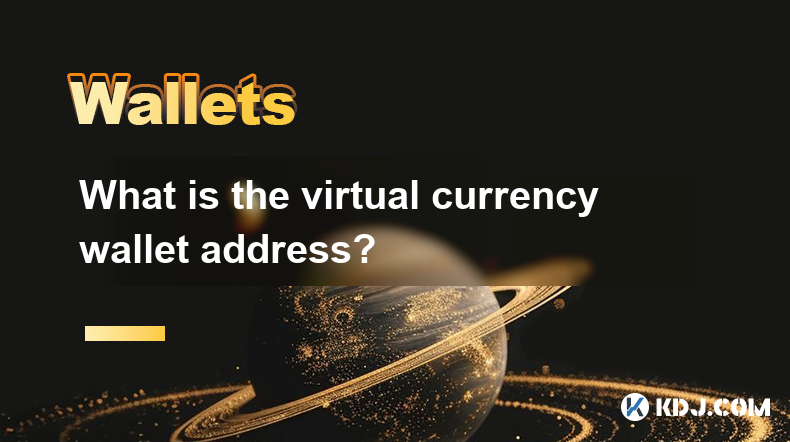
Key Points:
- Definition of a Virtual Currency Wallet Address
- Types of Virtual Currency Wallet Addresses
- Creating a Virtual Currency Wallet Address
- Sending and Receiving Cryptocurrencies Using a Wallet Address
- Security Considerations for Virtual Currency Wallet Addresses
Definition of a Virtual Currency Wallet Address
In the world of cryptocurrencies, a wallet address is a unique identifier assigned to a specific wallet. It is a cryptographic hash derived from the public key associated with the wallet, which is used to identify the recipient of transactions on a blockchain network. A virtual currency wallet address allows users to send and receive cryptocurrencies securely and efficiently.
Types of Virtual Currency Wallet Addresses
There are two main types of virtual currency wallet addresses:
- Single-Use Addresses: These addresses are generated uniquely for each transaction and are designed to enhance privacy by preventing the linking of multiple transactions to the same wallet.
- Multiple-Use Addresses: These addresses can be used for multiple transactions and are typically used for holding and managing cryptocurrencies in a long-term cold storage wallet or on an exchange.
Creating a Virtual Currency Wallet Address
Creating a virtual currency wallet address is a simple process that varies depending on the type of wallet used.
- Hardware Wallets: Hardware wallets like Trezor and Ledger generate wallet addresses internally as part of the setup process.
- Software Wallets: Software wallets like Exodus and Electrum allow users to create wallet addresses by generating a new public-private key pair.
- Exchange Wallets: Cryptocurrency exchanges like Coinbase and Binance provide wallet addresses for users to store and manage their cryptocurrencies.
Sending and Receiving Cryptocurrencies Using a Wallet Address
Sending and receiving cryptocurrencies using a wallet address is straightforward:
- Sending Cryptocurrencies: To send cryptocurrencies, enter the recipient's wallet address in the "Send" section of the wallet and specify the amount to be sent. Confirm the transaction on the blockchain using your private key.
- Receiving Cryptocurrencies: When receiving cryptocurrencies, provide the sender with your wallet address. The sender will use this address to send the funds directly to your wallet. Once the transaction is confirmed on the blockchain, the funds will be available in your wallet.
Security Considerations for Virtual Currency Wallet Addresses
Virtual currency wallet addresses are sensitive information that should be handled with care:
- Protect Your Private Key: Never share your private key with anyone, as it can compromise the security of your wallet.
- Use Strong Passwords: Ensure strong passwords protect your software wallet and exchange accounts.
- Beware of Phishing Attacks: Be wary of emails or websites requesting your wallet address or private key. Always verify the sender's legitimacy before sharing sensitive information.
- Store in Cold Storage: When storing large amounts of cryptocurrency, consider using a hardware wallet or cold storage solution to enhance security by keeping your keys offline.
FAQs:
What is the difference between a public key and a wallet address?
- A wallet address is derived from a public key and is used as an identifier for receiving transactions. A public key is used to encrypt transactions being sent from the wallet.
Can I generate a new wallet address at any time?
- Yes, you can create multiple wallet addresses as needed to enhance privacy or manage different assets.
Is there a fee for creating a wallet address?
- Typically, there is no fee for creating a wallet address, but some exchanges may charge a small fee for receiving funds on certain blockchains.
Can I use my wallet address on multiple wallets?
- No, a wallet address is specific to the wallet it was generated for and cannot be used on other wallets.
What should I do if I lose my wallet address?
- If you lose your wallet address, you will not be able to access the funds associated with that address. It is important to backup your wallet regularly and store it securely to avoid losing access to your cryptocurrencies.
Disclaimer:info@kdj.com
The information provided is not trading advice. kdj.com does not assume any responsibility for any investments made based on the information provided in this article. Cryptocurrencies are highly volatile and it is highly recommended that you invest with caution after thorough research!
If you believe that the content used on this website infringes your copyright, please contact us immediately (info@kdj.com) and we will delete it promptly.
- The Ultimate List of Meme Coins Exploding in 2025: From Arctic Pablo to Mubarak
- 2025-05-03 10:15:29
- Bonk Hit Orbit, Were You Onboard? Now, Arctic Pablo Coin Is Tipped as the Next Top Meme Coin of 2025
- 2025-05-03 10:15:29
- Bitcoin (BTC) Prepares to Enter a New Bullish Phase As Market Structure Shifts
- 2025-05-03 10:13:50
- Ripple XRP Soars 5%, Cementing Its Position as the 4th Most Valuable Crypto Asset
- 2025-05-03 10:13:50
- David Marcus Predicts Bitcoin (BTC) Is on Track to Become a Major Player in Everyday Transactions
- 2025-05-03 10:01:50
- title: Stablecoin issuer Tether (USDT) is reportedly looking to return to the US with a new dollar-pegged digital asset.
- 2025-05-03 10:01:50
Related knowledge
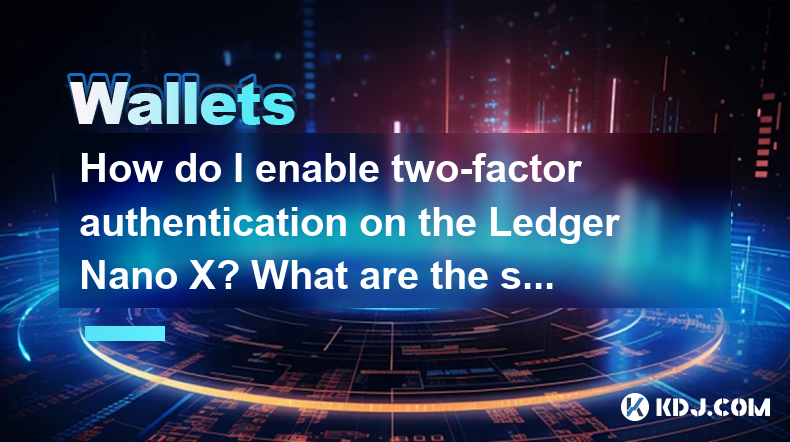
How do I enable two-factor authentication on the Ledger Nano X? What are the security options?
May 02,2025 at 09:49pm
Enabling two-factor authentication (2FA) on your Ledger Nano X is a critical step in securing your cryptocurrency assets. The Ledger Nano X offers robust security options that enhance the protection of your digital wealth. In this article, we will guide you through the process of enabling 2FA on your Ledger Nano X and explore the various security featur...
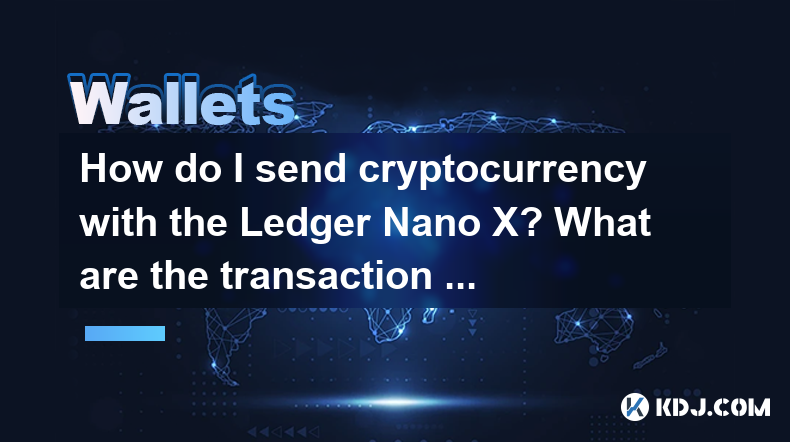
How do I send cryptocurrency with the Ledger Nano X? What are the transaction confirmation steps?
May 03,2025 at 05:01am
Sending cryptocurrency using the Ledger Nano X involves a series of steps that ensure the security and accuracy of your transactions. This process is designed to be user-friendly while maintaining the high level of security that Ledger devices are known for. In this article, we will guide you through the process of sending cryptocurrency with the Ledger...
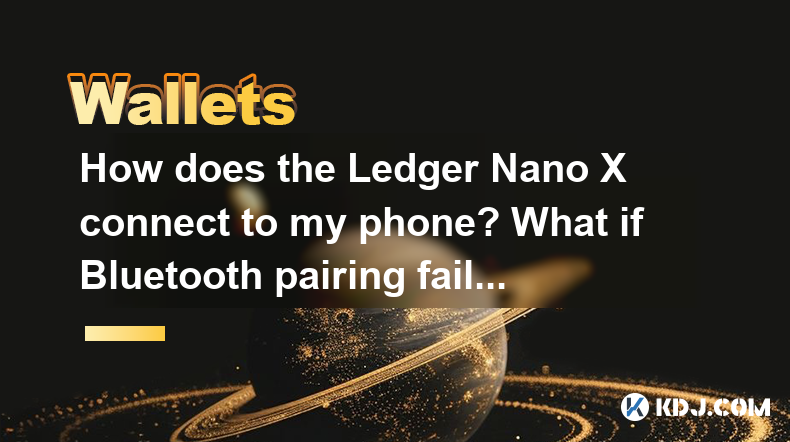
How does the Ledger Nano X connect to my phone? What if Bluetooth pairing fails?
May 02,2025 at 07:07pm
The Ledger Nano X is a popular hardware wallet designed to securely store your cryptocurrency. One of its key features is the ability to connect to your smartphone via Bluetooth, allowing for a seamless and convenient user experience. In this article, we will explore how to connect your Ledger Nano X to your phone and what to do if Bluetooth pairing fai...

How do I update the Ledger Nano X firmware? What if the update fails?
May 02,2025 at 06:00am
Updating the firmware of your Ledger Nano X is an essential process to ensure that your device remains secure and fully functional. The Ledger Nano X is a popular hardware wallet used for storing various cryptocurrencies safely. In this article, we will guide you through the step-by-step process of updating the firmware, and we will also address what to...
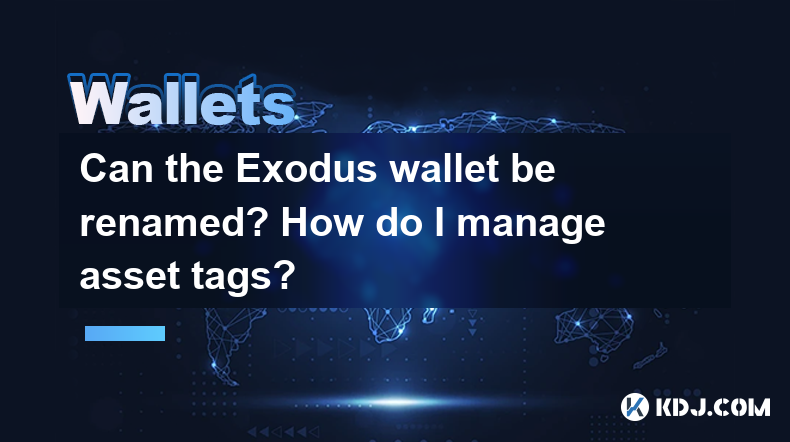
Can the Exodus wallet be renamed? How do I manage asset tags?
May 02,2025 at 11:49pm
Can the Exodus Wallet Be Renamed?Exodus wallet, a popular choice among cryptocurrency enthusiasts, offers a user-friendly interface and robust security features. One of the frequently asked questions by its users is whether the wallet can be renamed. The answer is yes, you can rename your Exodus wallet. This feature allows users to personalize their wal...
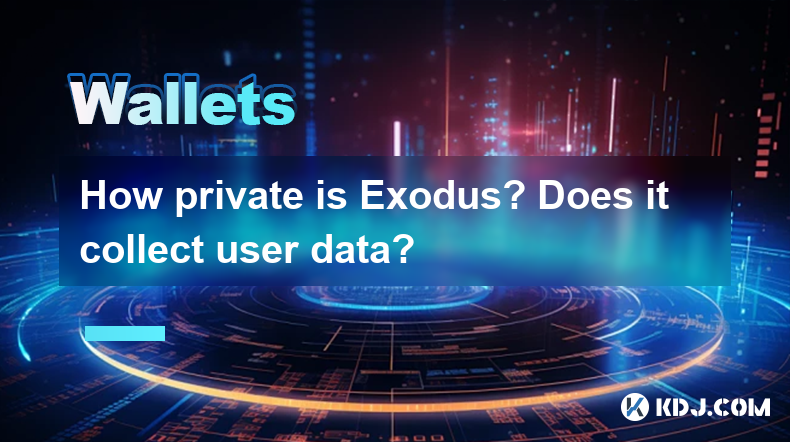
How private is Exodus? Does it collect user data?
May 03,2025 at 01:49am
How Private is Exodus? Does it Collect User Data? Exodus is a popular cryptocurrency wallet that prides itself on its user-friendly interface and robust features. However, when it comes to privacy and data collection, many users are curious about how private Exodus really is and whether it collects user data. In this article, we will delve into the priv...

How do I enable two-factor authentication on the Ledger Nano X? What are the security options?
May 02,2025 at 09:49pm
Enabling two-factor authentication (2FA) on your Ledger Nano X is a critical step in securing your cryptocurrency assets. The Ledger Nano X offers robust security options that enhance the protection of your digital wealth. In this article, we will guide you through the process of enabling 2FA on your Ledger Nano X and explore the various security featur...

How do I send cryptocurrency with the Ledger Nano X? What are the transaction confirmation steps?
May 03,2025 at 05:01am
Sending cryptocurrency using the Ledger Nano X involves a series of steps that ensure the security and accuracy of your transactions. This process is designed to be user-friendly while maintaining the high level of security that Ledger devices are known for. In this article, we will guide you through the process of sending cryptocurrency with the Ledger...

How does the Ledger Nano X connect to my phone? What if Bluetooth pairing fails?
May 02,2025 at 07:07pm
The Ledger Nano X is a popular hardware wallet designed to securely store your cryptocurrency. One of its key features is the ability to connect to your smartphone via Bluetooth, allowing for a seamless and convenient user experience. In this article, we will explore how to connect your Ledger Nano X to your phone and what to do if Bluetooth pairing fai...

How do I update the Ledger Nano X firmware? What if the update fails?
May 02,2025 at 06:00am
Updating the firmware of your Ledger Nano X is an essential process to ensure that your device remains secure and fully functional. The Ledger Nano X is a popular hardware wallet used for storing various cryptocurrencies safely. In this article, we will guide you through the step-by-step process of updating the firmware, and we will also address what to...

Can the Exodus wallet be renamed? How do I manage asset tags?
May 02,2025 at 11:49pm
Can the Exodus Wallet Be Renamed?Exodus wallet, a popular choice among cryptocurrency enthusiasts, offers a user-friendly interface and robust security features. One of the frequently asked questions by its users is whether the wallet can be renamed. The answer is yes, you can rename your Exodus wallet. This feature allows users to personalize their wal...

How private is Exodus? Does it collect user data?
May 03,2025 at 01:49am
How Private is Exodus? Does it Collect User Data? Exodus is a popular cryptocurrency wallet that prides itself on its user-friendly interface and robust features. However, when it comes to privacy and data collection, many users are curious about how private Exodus really is and whether it collects user data. In this article, we will delve into the priv...
See all articles





















































































